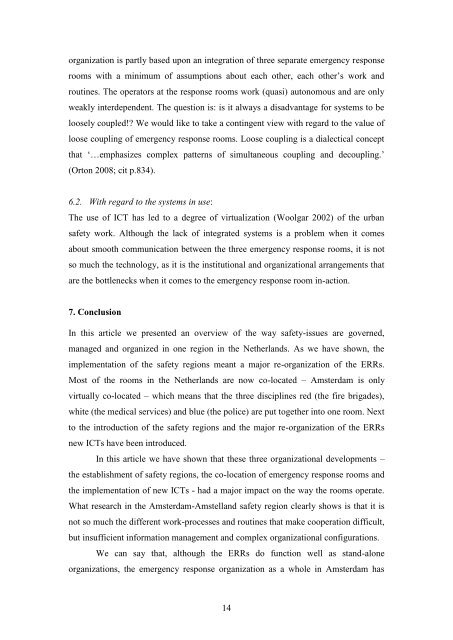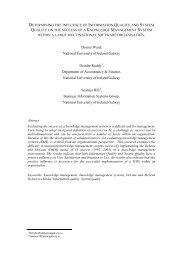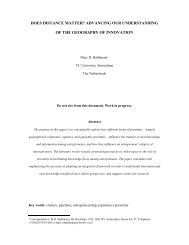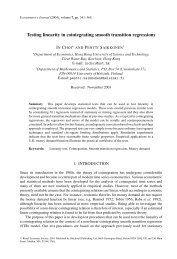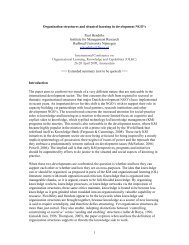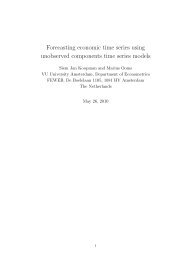Kees Boersma; Peter Groenewegen
Kees Boersma; Peter Groenewegen
Kees Boersma; Peter Groenewegen
You also want an ePaper? Increase the reach of your titles
YUMPU automatically turns print PDFs into web optimized ePapers that Google loves.
organization is partly based upon an integration of three separate emergency response<br />
rooms with a minimum of assumptions about each other, each other‟s work and<br />
routines. The operators at the response rooms work (quasi) autonomous and are only<br />
weakly interdependent. The question is: is it always a disadvantage for systems to be<br />
loosely coupled!? We would like to take a contingent view with regard to the value of<br />
loose coupling of emergency response rooms. Loose coupling is a dialectical concept<br />
that „…emphasizes complex patterns of simultaneous coupling and decoupling.‟<br />
(Orton 2008; cit p.834).<br />
6.2. With regard to the systems in use:<br />
The use of ICT has led to a degree of virtualization (Woolgar 2002) of the urban<br />
safety work. Although the lack of integrated systems is a problem when it comes<br />
about smooth communication between the three emergency response rooms, it is not<br />
so much the technology, as it is the institutional and organizational arrangements that<br />
are the bottlenecks when it comes to the emergency response room in-action.<br />
7. Conclusion<br />
In this article we presented an overview of the way safety-issues are governed,<br />
managed and organized in one region in the Netherlands. As we have shown, the<br />
implementation of the safety regions meant a major re-organization of the ERRs.<br />
Most of the rooms in the Netherlands are now co-located – Amsterdam is only<br />
virtually co-located – which means that the three disciplines red (the fire brigades),<br />
white (the medical services) and blue (the police) are put together into one room. Next<br />
to the introduction of the safety regions and the major re-organization of the ERRs<br />
new ICTs have been introduced.<br />
In this article we have shown that these three organizational developments –<br />
the establishment of safety regions, the co-location of emergency response rooms and<br />
the implementation of new ICTs - had a major impact on the way the rooms operate.<br />
What research in the Amsterdam-Amstelland safety region clearly shows is that it is<br />
not so much the different work-processes and routines that make cooperation difficult,<br />
but insufficient information management and complex organizational configurations.<br />
We can say that, although the ERRs do function well as stand-alone<br />
organizations, the emergency response organization as a whole in Amsterdam has<br />
14


